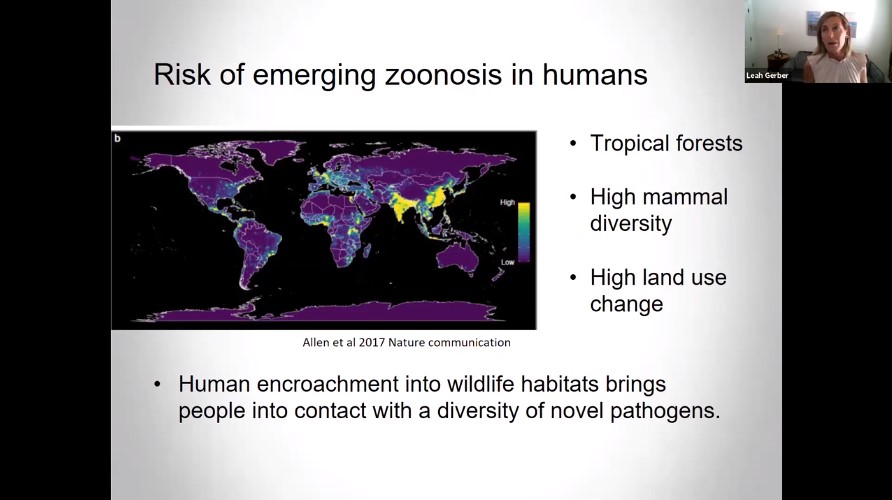Preventing the next pandemic
ASU professor says environmental degradation may be a root cause of pandemics, vulnerabilities

“We seem to have lost sight of the deeper drivers of an accelerating risk of infectious disease transmission to the world,” wrote Leah Gerber, professor of conservation science and director of the Center for Biodiversity Outcomes at Arizona State University, in a recent piece for Issues in Science and Technology, referring to the root causes of the coronavirus pandemic.
“Environmental degradation, and especially habitat destruction, is the underlying problem that creates conditions favorable to zoonotic jumping.”
Experts worldwide have been focused on trying to quell rising cases. Gerber is sounding the alarm that we need to focus on how the pandemic started to prevent history from repeating itself in the near future. On June 11, Gerber led “A Global Strategy for Preventing the Next Pandemic,” a discussion hosted by ASU’s Consortium for Science, Policy and Outcomes. She explained how environmental degradation could be the underlying problem that led to the mass spread of COVID-19 — and which is also causing other unprecedented threats to humanity.
“When we degrade biodiversity, this increases the risk of zoonosis, and a zoonotic disease is one that spreads from animals to humans,” Gerber said. “This is what we experienced with the COVID pandemic.”
READ MORE: To prevent another pandemic, police the wildlife trade, says ASU expert
Gerber emphasized that the factors contributing to the spread of COVID-19 among humans are mainly issues that humans caused, such as habitat destruction.
A related phenomenon caused by human interference with wildlife and their habitats is mass extinction, which Gerber says will lead to much lower biodiversity on Earth. Past mass extinctions have been natural, which Gerber notes makes this one quite different.
“There have been five mass extinctions on Earth, and data suggest we’re in the middle of a sixth mass extinction — one that is specifically caused by humans,” Gerber explained. “What happens when we have a pandemic during a mass extinction? The same factors that have put biodiversity at risk make us vulnerable to pandemics.”
ASU Professor Leah Gerber leads a webinar called “A Global Strategy for Preventing the Next Pandemic" on Thursday, June 11, 2020.
Gerber believes the global community must come together to track how human activity is causing zoonotic diseases like COVID-19 through a new organization.
There are already public-health organizations with a global reach, such as the World Health Organization. But Gerber’s organization would have a more comprehensive remit. This new organization, which Gerber calls the Zoonotic Disease Commission, could accomplish three things: support communication of basic science; provide global governance with regulatory clout; and transform the global economy to create markets that can minimize risk.
“It can be a problem when we have nonbinding global agreements to try and work together and promote governance, and I’m also not seeing discussion about incentives or market-based solutions in existing institutions,” Gerber said.
Gerber hopes that the world will be inspired to take this sort of global action to mitigate the loss of biodiversity and the risk of future pandemics.
“When the COVID virus hit I thought maybe this could be a way to reach people because it’s actually impacting us,” Gerber said. “It’s not just about being altruistic anymore.”
Top photo by Pixabay
More Science and technology

ASU receives 3 awards for research critical to national security
Three researchers in the Ira A. Fulton Schools of Engineering at Arizona State University have received grant awards under the Defense Established Program to Stimulate Competitive Research, or…

Celebrating 34 years of space discovery with NASA
This year, NASA's Hubble Space Telescope (HST) is celebrating its 34th anniversary of the world's first space-based optical telescope, which paved the scientific pathway for NASA's James Webb Space…

Making magic happen: Engineering and designing theme parks
The themed entertainment industry is widespread and diverse, encompassing everything from theme parks to aquariums, zoos, water parks, museums and more. The Theme Park Engineering and Design…
